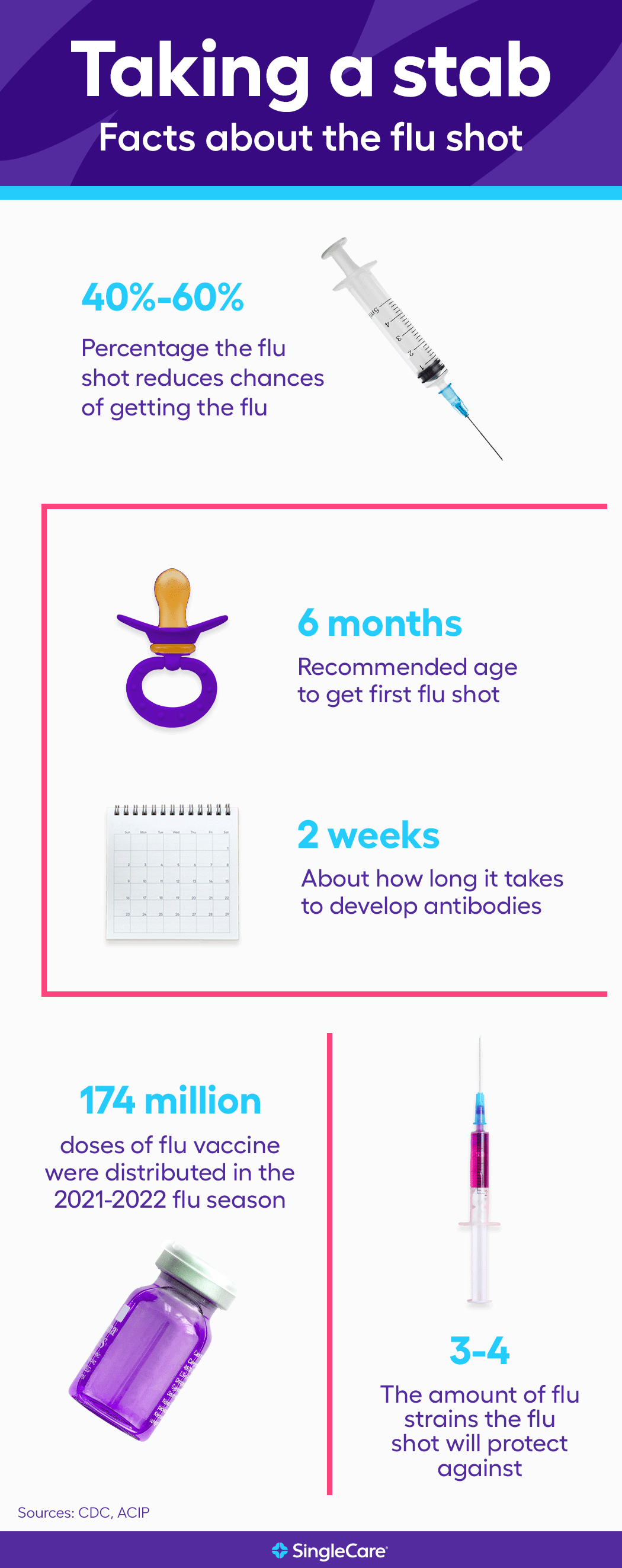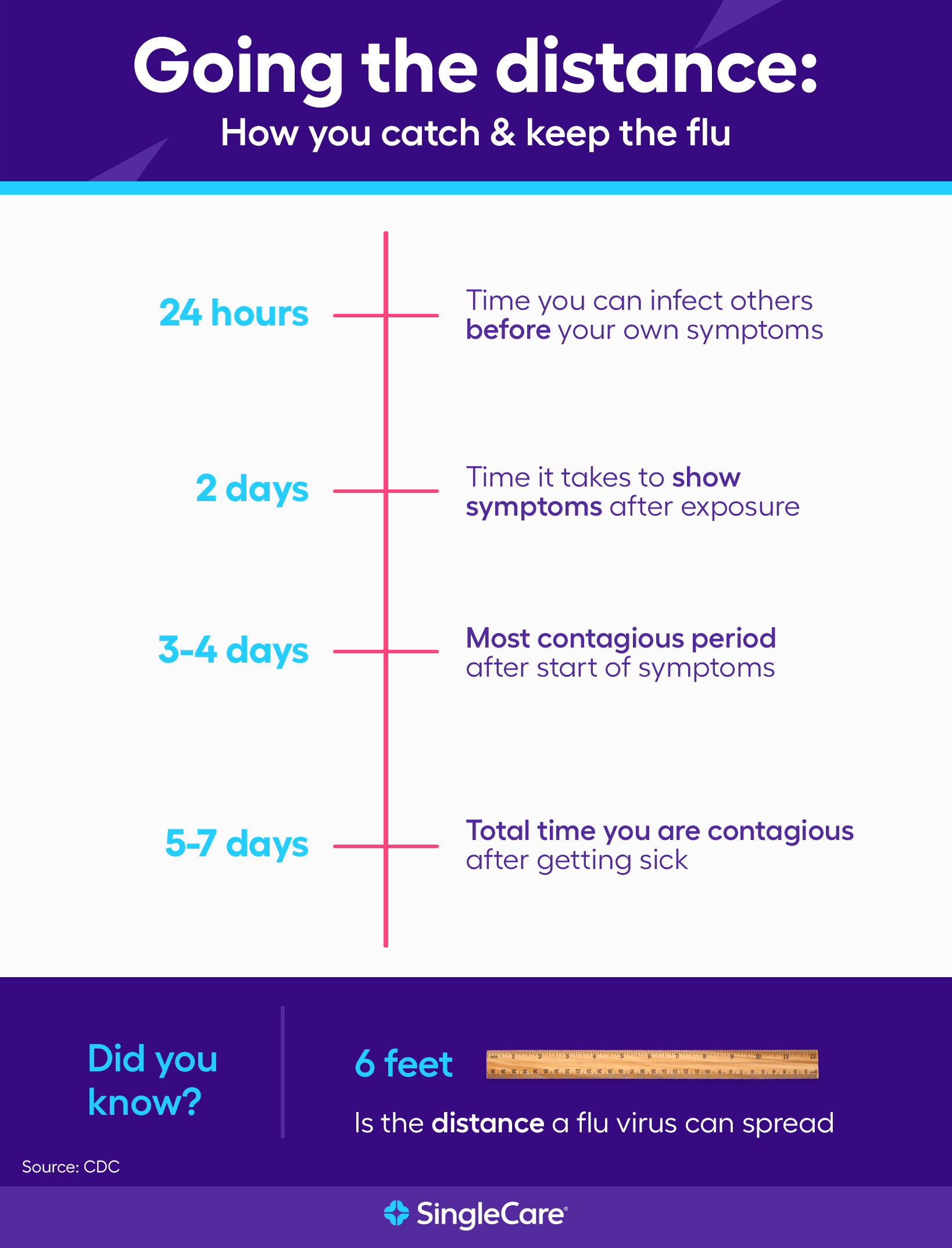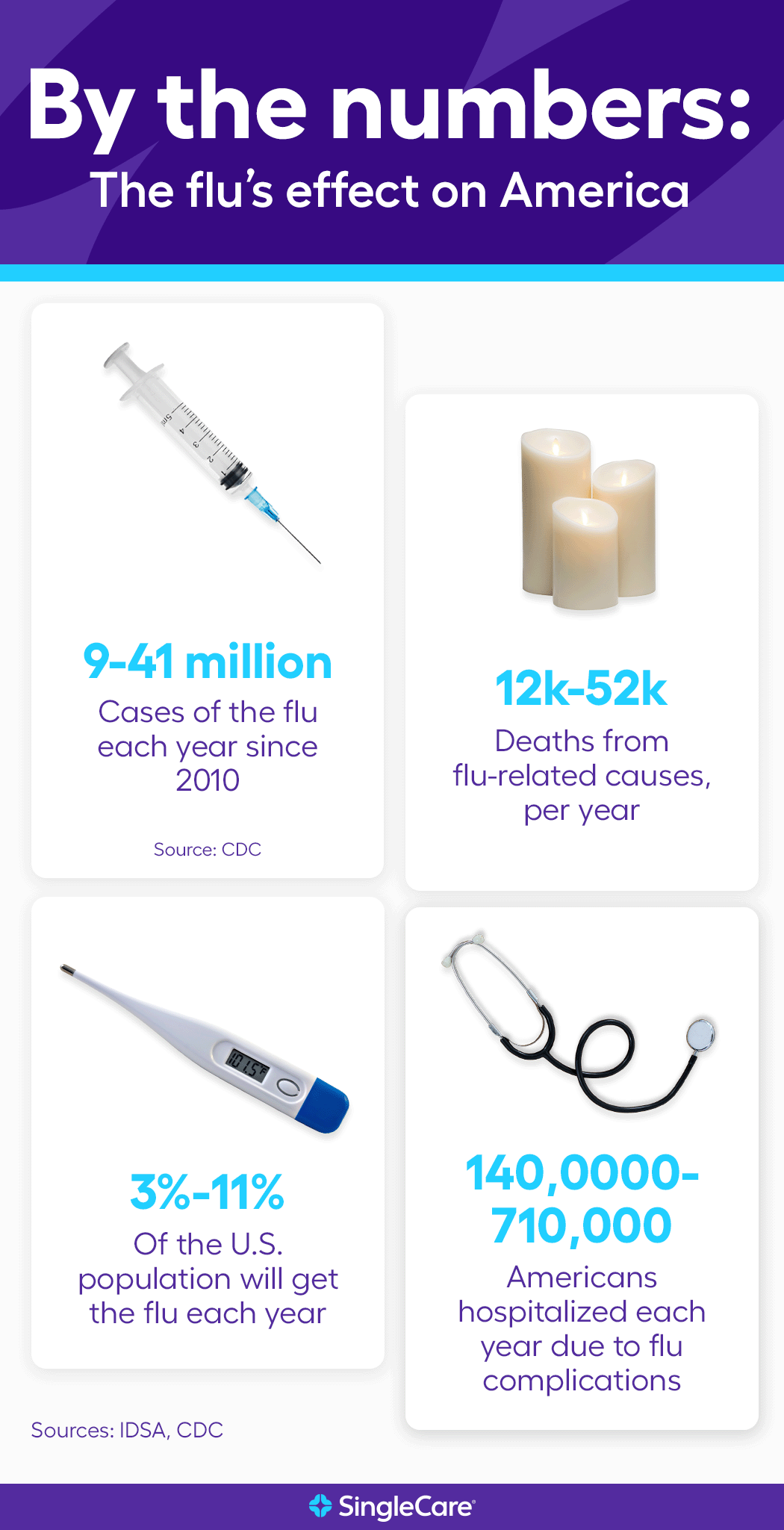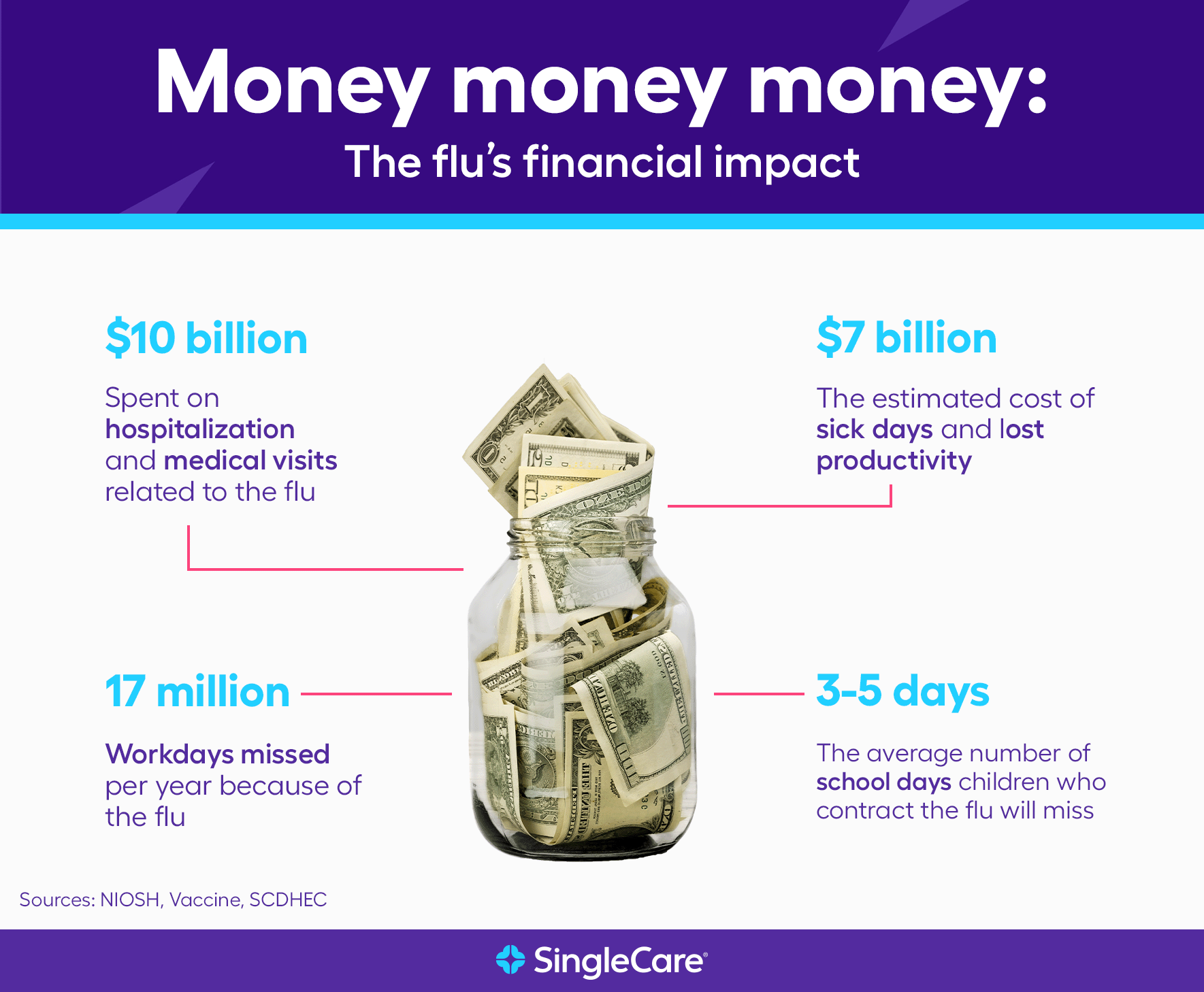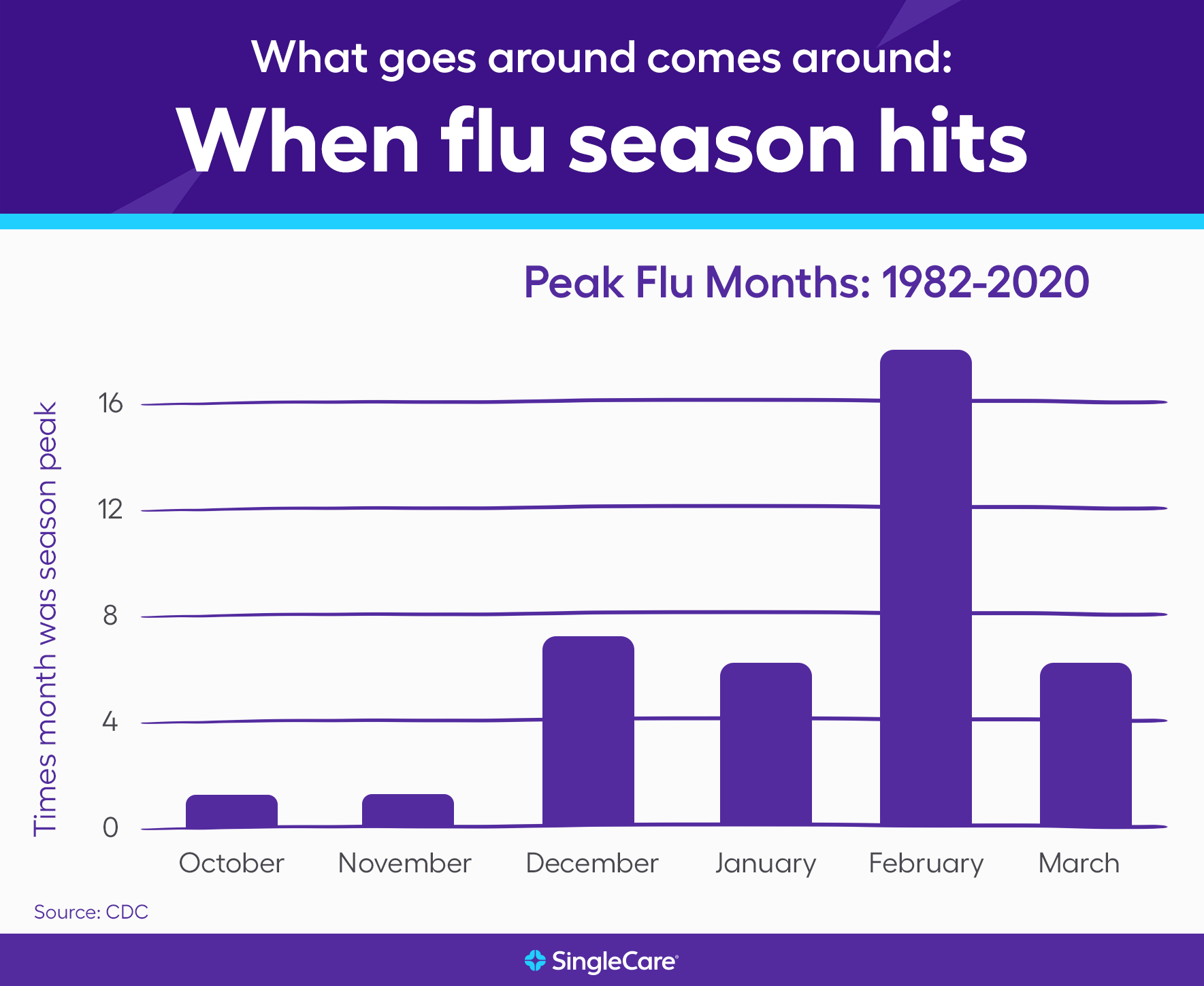Key takeaways
Between 3% and 11% of Americans contract the flu annually, leading to symptoms ranging from mild to severe, with high-risk groups facing greater dangers including hospitalization or death.
Vaccination is the most effective prevention method against the flu, reducing the risk of illness by 40%-60%, and even if the flu is contracted post-vaccination, symptoms are less severe.
The flu virus is highly contagious, spreading through droplets from coughs and sneezes, with individuals being contagious before symptoms arise and during the illness.
Annual flu activity in the U.S. peaks between December and February, and prevention measures include avoiding close contact with sick individuals, practicing good hygiene, and maintaining a healthy lifestyle.
Flu shot statistics | Transmission | Flu statistics | Annual burden | Flu season | Prevention
The flu, by definition, is a contagious respiratory illness caused by influenza viruses that infect the nose, throat, and sometimes the lungs. The flu, by reputation, is awful and can ruin your season. For anyone who hasn’t had it, though: The flu causes mild to severe symptoms in those infected, including, but not limited to: fever (or feeling feverish/chilled), cough, sore throat, runny or stuffy nose, muscle or body aches, headaches, fatigue, and even vomiting or diarrhea. It can cause mild to severe illness, and complications can lead to hospitalization or death particularly in high-risk groups.
The flu virus is so common that the number of people infected each influenza season can only be estimated, not determined for certain. The Centers for Disease Control and Prevention (CDC) annually estimates the impact of the flu on the U.S. population. Preliminary influenza activity data on its website for the 2021-2022 flu season includes the following: the number of flu illnesses in the United States is estimated to be between 8-13 million cases. As well, 3.7-6.1 million sought care from their healthcare provider, 82,000-170,000 were hospitalized, and 5,000 to 14,000 died from influenza.
We collected flu statistics and information from the CDC and other public health organizations to show the impact of flu season—and the power of the flu shot for avoiding the seasonal influenza virus.
RELATED: Immunization and vaccination statistics
Flu vaccine statistics
Experts agree that the best way to prevent the flu is by getting a flu vaccination each year. The flu shot is a vaccine that contains weakened or deactivated flu viruses, which allows your body’s immune system to learn to fight the virus before you come into contact with the live (and harmful) virus during flu season. Plus, if you get the flu shot and do still catch the flu, it will help lessen the severity and shorten the duration of symptoms. Take a stab at these flu shot facts:
- It takes 2 weeks to develop antibodies after getting an influenza vaccination.
- It’s recommended that you start getting flu shots at 6 months.
- The flu shot reduces your chances of getting the flu by 40%-60%.
- 174 million doses of the influenza vaccine were distributed in the 2021-2022 season.
- A flu shot will protect you against 4 flu strains.
According to the CDC, the flu shot is considered safe and is recommended for all people older than 6 months. Instances of severe adverse reactions are uncommon, and according to research, there is no association between vaccinations and an increased risk of death at the population level. In fact, according to a recent study, individuals who became infected with the flu despite vaccination were 26% less likely to end up in the ICU and had a 31% reduced risk of death.
Some individuals should not get the flu shot. These include:
- Infants younger than 6 months old
- People with severe allergies to any ingredients in the vaccine
- Those who have experienced a severe allergic reaction to the vaccine in the past should consult with their doctor before getting vaccinated
- Individuals who have had Guillain-Barre syndrome after a vaccination in the past should reach out to their healthcare provider for advice
- People with an egg allergy should discuss vaccinations options with their provider
- Individuals who are sick should ask a doctor if they should wait to get vaccinated
The CDC reports that American Indians and Alaskan natives, pregnant women, young children (younger than 5, but especially those younger than two), and older people (65 and older) as well as people living in nursing homes, hospitals, or care facilities are at higher risk of serious complications from the flu.
More flu facts: 7 myths about the flu shot
Catching the flu
Catching the flu is easier than one might want to believe. People infected with the flu can spread it to others up to about 6 feet away through airborne droplets that are exchanged when people who have the flu cough, sneeze, or talk. After becoming infected, those infected with the flu are most contagious in the first three to four days after their illness begins, but the virus can be spread before those who are infected experience any symptoms at all. Staying flu-free requires lots of handwashing, hydration, and preventive measures (like a flu shot). Here’s how you catch and keep the flu virus:
- 24 hours—how long you can infect others before you have flu symptoms
- 5-7 days—the length of time after getting sick that you can still pass infection
- 2 days—the time between when you’re exposed and when you show symptoms
The most common flu symptoms include fever, chills, headache, body aches, cough, sore throat, nasal congestion or a runny nose, and fatigue. Nausea, vomiting and diarrhea are also possible, but occur more frequently in young children.
A flu test is necessary to determine whether you have the flu or an influenza-like illness (ILI). For an accurate diagnosis, specimens will be taken by swabbing your nose and throat. Rapid influenza diagnostic tests (RIDTs) work quickly–within 10-15 minutes–to detect components of the flu virus called antigens that trigger your body’s immune response. Another test, rapid molecular assays, takes 15-20 minutes, and works by detecting the genetic material of the flu virus. Rapid molecular assays are more accurate than RIDTs, but the most accurate tests available are sent to a laboratory for results, which can take up to three hours. These include reverse transcription polymerase chain reaction (RT-PCR), viral culture, and immunofluorescence assays.
RELATED: Coronavirus (COVID-19) vs. the flu vs. a cold
Flu prevalence
The reason you hear so much about the flu each year is because it’s incredibly common: Each year, 3% to 11% of the U.S. population will get the flu on average. A recent study found that adults get the flu twice per decade on average, but children are infected once every other year on average. There have been 9 to 41 million cases of the flu each year since 2010 according to the CDC. And the effects are serious. An estimated 140,000 to 710,000 Americans are hospitalized each year because of complications from the flu illness. And as for flu death statistics, 12,000 to 52,000 people have died each year from flu-related causes in the U.S over the past decade.
The cost of the flu
Aside from the money (and time) lost when the flu sidelines you from work and play, the flu is very costly. In previous years, the U.S. has spent $1.3 billion on stockpiling Tamiflu (oseltamivir)—which adds up to 65 million dosages—to help treat diagnosed cases of the flu. On average, patients who start taking Tamiflu within 48 hours of getting sick will recover one day faster than patients who do not take anything, according to Margaret Dayhoff-Brannigan, Ph.D., a patient network project manager at the National Center for Health Research. Every year, the flu has a very real cost:
- 17 million work days are missed per year because of the flu
- $7 billion—the estimated cost of sick days and lost productivity
- $10 billion—spent on hospitalization and medical visits related to the flu
- 3-5 days—the average number of school days children who contract the flu will miss
RELATED: How to get a free flu shot
Flu season
You can come down with the flu at any time. Seasonal flu viruses are detected year-round in the United States, but flu viruses are most common during the fall and winter—giving us the concept of “flu season.” Cases of the flu often begin to rise in October, and flu activity peaks between December and February.
Prevention
To avoid catching the flu and other respiratory viruses, avoid close contact with others who are sick. If you are sick, stay home to prevent passing the virus to others. Always cover your nose and mouth when you sneeze or cough, preferably with a tissue. Do your best not to touch your eyes, nose or mouth with your hands, as this is the most common way the virus is transmitted. Regularly washing your hands or using hand sanitizer if soap and water is not available will also boost your protection against infectious diseases. Finally, follow a healthy lifestyle—get plenty of sleep, stay hydrated, eat a nutrient-packed diet, and stay active.
If you do come down with an influenza virus, you’ll have to let it run its course, which usually takes between 3-7 days, but can last two weeks or more in severe cases. The best way to recover from the flu is to get plenty of rest, stay hydrated, and use OTC medications such as Advil, Motrin (ibuprofen), Tylenol (acetaminophen), and Aleve (naproxen). to treat your symptoms.
There are currently four prescription antiviral drugs that are FDA-approved in individuals who are diagnosed with or suspected to have the flu, Tamiflu (oseltamivir phosphate), Relenza (zanamivir), Rapivab, (peramivir), and Xofluza (baloxavir marboxil). These medications, which work best when started within 2 days of the flu’s onset, can shorten the duration of symptoms by about a day. Typically, antiviral treatment is reserved for individuals at high risk of serious flu complications due to chronic health conditions such as asthma, heart disease, lung disease, liver disorders, kidney disorders, endocrine disorders, metabolic disorders, blood disorders, obesity, neurological disorders, or a weakened immune system.
READ THESE NEXT:





